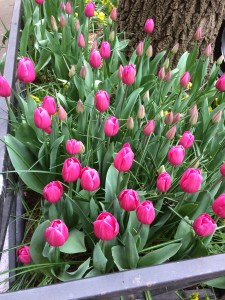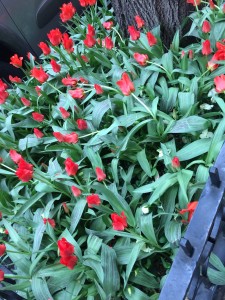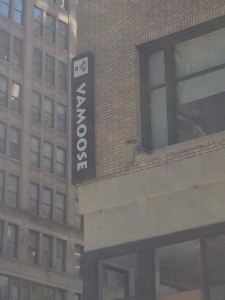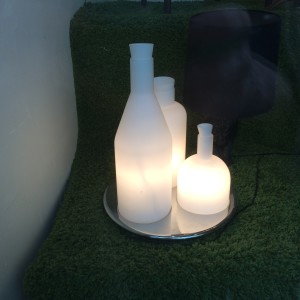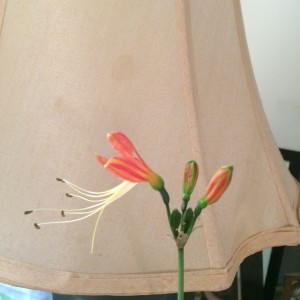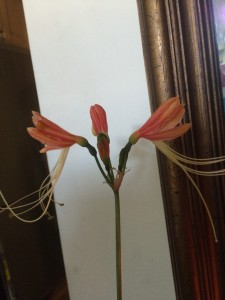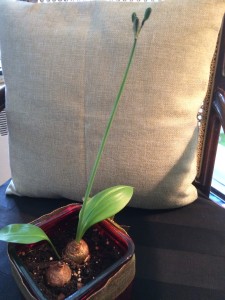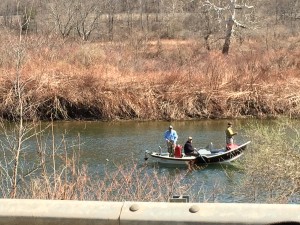I so wanted to chime in. Walking down the street, I came upon a couple walking in front of me. She was saying to him, “I’ve asked you, how many times to stop, and you keep doing it. and then when you finally do stop then you act all hurt.” I wanted to give her a thumbs up because I truly understood those words. They then waited, halted the conversation until I passed before she continued and said “How come in this scenario I’m always the as##e in your head?” I kept walking, but I heard him say ‘Well, lets just talk about this scenario ” and she says, “I am talking about this scenario.” And he went on to have more remarks avoiding the issue and she tried to make him hear her, but his arguing made it sound like a lost cause. They were perhaps in their 20’s. Did not sound to me, from my vantage point of age, as if there was room for resolution.
The APOLLO
Arturo O’Farrill & the Afro Latin Jazz Orchestra with special guest Cornel West.
Was that an evening! Have been wanting to attend an event at this cultural shrine for years, and finally got it together with a friend and went!. My biggest surprise? the stage was closer to the audience than expected.
Took the A-train to get there… thank you! and can hardly wait to go again.
West Village Bulb Fields
To My Surprise!
The first picture is the end of a long line. Some days the line bends around 4 times. I wondered for what could the people be waiting, as the line is in front of a dark facade as if a closed theatre. Day after day, on the bus, I would see it. I figured that the sign of the ‘massage here’ was the offering. At last I had a minute, it was about 11:35 am and the line was 2 male persons and a doorman figure. I asked. The line is for the Burger restaurant [you can see the sign]. Can a restaurant for burgers be that good, I asked? Not only the burgers, replied one of the men, but the milkshakes. Clearly ShakeShack has met it’s match.
How Bus Stations Have Morphed
In years gone bye the bus station was a building, often near the train station. But today the bus is caught ‘on the corner’ where a line forms, 45 minutes prior to departure. You know where it is because across the street is a sign on the side of the building, and the website tells you the coordinates.
A DIY?
Five Month Wait
Whew
That was a long time quiet. I consciously do not report on my work or audition efforts as my story about those endeavors is no different from all persons here in the City who are continually seeking work. Every audition is a new-job-interivew. Every audition is a 50-50 gamble: either you get it or you don’t. There are hundreds of articles every week on why you do or why you don’t and how you have all, some or no control over the process. But when work does come around it is wonderfully rewarding and time consuming. Hence the quiet. All good.
Have Been Nuturing Since December
tried to post picture… no luck with that. Have two bulbs and one is finally showing some signs of life:
Eucrosia bicolor
From Wikipedia, the free encyclopedia
Eucrosia bicolor
Gardenology-IMG 4845 hunt10mar.jpg
Scientific classification e
Kingdom: Plantae
Clade: Angiosperms
Clade: Monocots
Order: Asparagales
Family: Amaryllidaceae
Subfamily: Amaryllidoideae
Genus: Eucrosia
Species: E. bicolor
Binomial name
Eucrosia bicolor
Ker Gawl.
Eucrosia bicolor is a species of plant found in Ecuador and Peru. Its natural habitats are seasonally dry lowland areas. It was the first species of Eucrosia to be scientifically described, in 1816, and the first to be introduced into cultivation in Europe, flowering outside its homeland for the first time in 1817. It is the most widely grown species of Eucrosia.
It grows from bulbs up to 4.5 cm in diameter. The slightly glaucous leaves, which usually appear by flowering time, have short petioles and blades (laminae) which are 20 cm long by 10 cm wide. The flowers are umbellate, on a stem (scape) up to 60 cm in height, pale red in colour, with stamens with prominent long filaments. The stamens are yellow in the Ecuadorian var. bicolor and red in the Peruvian var. plowmanii.
When grown in cultivation in Europe, it should be kept dry at 10 °C or above when the leaves wither, and watered again when the flowers and leaves begin to appear in spring, when it should be kept in a sunny position.[1]
References[edit]
Jump up ^ Grossi, Alberto (2010), “Eucrosia in cultivation”, The Plantsman (New Series) 9 (4): 239–244, p. 241
Scientific classification e
Kingdom: Plantae
Clade: Angiosperms
Clade: Monocots
Order: Asparagales
Family: Amaryllidaceae
Subfamily: Amaryllidoideae
Genus: Eucrosia
Species: E. bicolor
Binomial name
Eucrosia bicolor
Ker Gawl.
Eucrosia bicolor is a species of plant found in Ecuador and Peru. Its natural habitats are seasonally dry lowland areas. It was the first species of Eucrosia to be scientifically described, in 1816, and the first to be introduced into cultivation in Europe, flowering outside its homeland for the first time in 1817. It is the most widely grown species of Eucrosia.
It grows from bulbs up to 4.5 cm in diameter. The slightly glaucous leaves, which usually appear by flowering time, have short petioles and blades (laminae) which are 20 cm long by 10 cm wide. The flowers are umbellate, on a stem (scape) up to 60 cm in height, pale red in colour, with stamens with prominent long filaments. The stamens are yellow in the Ecuadorian var. bicolor and red in the Peruvian var. plowmanii.
When grown in cultivation in Europe, it should be kept dry at 10 °C or above when the leaves wither, and watered again when the flowers and leaves begin to appear in spring, when it should be kept in a sunny position.[1]
References[edit]
Jump up ^ Grossi, Alberto (2010), “Eucrosia in cultivation”, The Plantsman (New Series) 9 (4): 239–244, p. 241
